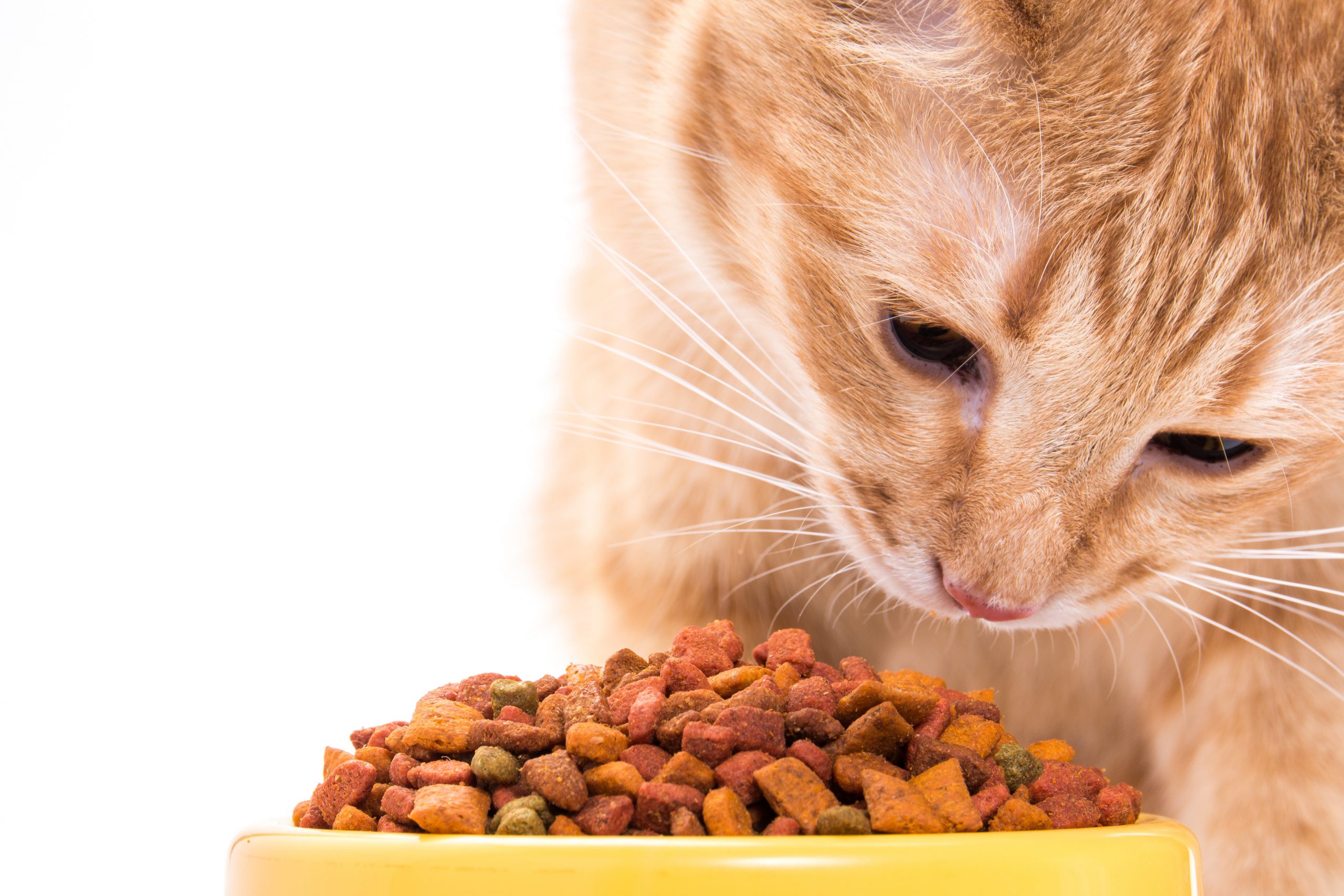Effect of functional pet food ingredients

Functional foods provide health benefits if they are consumed on a regular basis as part of a varied diet. But what does literature say about the benefits for cats and dogs in terms of disease prevention and treatment?
Functional foods modify gastrointestinal physiology, promote changes in biochemical parameters, improve brain functions and may reduce or minimise the risk of developing specific pathologies. The role of functional foods has been investigated in dogs and cats in order to better understand their metabolism, thus optimising companion animal nutritional and health status. Although we have to keep in mind that diets are different between cats and dogs. Cats have a diet consisting of 52% protein, 36% fat and 12% carbohydrate. Therefore, we have to study pet nutrition considering dogs and cats separately. Many researchers have done so over the last decades. A review of some of these studies is presented here.
Functional foods in dog nutrition
Examples of functional pet food ingredients are fruits and vegetables, botanicals, whole grains, glucosamine and prebiotics and probiotics. Some of these functional foods are high in fibre components and aimed to modify the intestinal microflora or increase in satiety. But functional foods are also added to supply essential amino acids and micronutrients such as magnesium, manganese and B vitamins and bioactive molecules, all of which have strong antioxidant and anti-inflammatory properties. Amino acids are often added as dietary supplement, because during pet food heat processing, the bioavailability of essential amino acids such as lysine can be reduced. Several studies focused on the role of functional foods in dog nutrition. For instance, in adult male beagles, oligofructose-enriched diet decreased faecal ammonia and Clostridium perfringens concentrations, while total aerobes increased, thus ameliorating the overall dog health.
Fructooligosaccharides (FOS), were used alone or in combination with mannan-oligosaccharide in dogs fed on a meat based diet. Dogs showed greater ileal immunoglobulin A concentration, whereas they displayed lower faecal total indole and phenol concentrations, if compared with untreated controls. A further study tested a 6 month maintenance diet (FOS as well as corn, fish meal, processed proteins of chicken, poultry fat, beet pulp, yeast, fish oil, minerals, dried yeast (Bio mannan-oligosaccharides), Yucca schidigera, Vitamin A, D3 and E, choline chloride, copper chelate of amino acids hydrate, DL-methionine, taurine, L-carnitine and tocopherols, Grifola frondosa, Curcuma longa, Carica papaya, Punica granatum, Aloe vera, Polygonum L., Haematococcus pluvialis, Solanum licopersicum, and Vitis vinifera) on oxidative stress markers. It was shown that this diet restored oxidative balance, hence supporting the idea that an adequate diet may be crucial to achieve a good oxidative balance in dogs.
Positive effect on fertility and thyroid activity
Another study showed a constant improvement in metabolic activity (free thyroxine and testosterone) within 45 days since the beginning of a diet enriched with antioxidants with a consequent positive effect on fertility and thyroid activity in dogs. But also to improve ear infections, certain functional ingredients seem to have a positive effect. Di Cerbo et al. observed a pivotal role of a functional diet (hydrolysed proteins of fish and vegetable origin, minerals, used as glidants, Melaleuca alternifolia, Tilia platyphyllos scapoli et cordata, Allium sativum L., Rosa canina L., and zinc) in relieving chronic otitis externa (chronic inflammation of a dog external ear canal)-associated symptoms limiting the need of pharmacological therapy to treat this condition. The nutraceutical diet, endowed with anti-inflammatory and antioxidant activities, significantly decreased the mean score intensity of all symptoms (occlusion of ear canal, erythema, discharge quantity, and odour) after 90 days of intervention.
Palatability studies
Pet food palatability has also been object of study since this feature is of key importance in terms of suitability and safety. A study from 2004 looked at the palatability of a dry canine diet and its effect on digestion of stabilised rice bran by determining faecal characteristics food intake, selected immune mediators and blood lipid characteristic. In the first experiment, the authors compared the palatability of four diets containing poultry fat (test diet 1) or soybean oil (test diet 2) combined with either 12% stabilised (test diet 3) of defatted rice bran (test diet 4) which were fed to 20 dogs for 4 days. Food intake improved in dogs fed on Test diet 1 combined with 12% stabilised rice bran.
In the second experiment, 36 beagles received six diets containing 12% stabilised or defatted rice bran diet combined with poultry fat, beef tallow, or poultry fat:soybean oil (50:50). Dogs on the defatted rice bran diet showed significantly lower plasma phospholipid total monounsaturated fatty acids with respect to those on a stabilised rice bran diet. They observed that stabilised rice bran was well tolerated in dogs with no detrimental effect on nutrient digestibility and faecal characteristics and without promoting changes in inflammatory and immune responses. Moreover, the stabilised rice bran diet presented better palatability compared to the defatted rice bran diet.

Effects in cats
Compared to dogs, cats are carnivorous animals with different nutritional needs, thus specific functional foods have been investigated in cat nutrition over the years. For example, in a randomised, double-blind, controlled clinical trial involving 55 cats with chronic diarrhoea, the efficacy of either a high (10%) or low fat (23%) highly digestible diet (soy flakes, soy protein isolate, turkey and turkey by-product meal, corn starch, oat meal, oat fibre, beef tallow vitamins and minerals) was evaluated by assessing the faecal score (FSa). All cats responded to the diets tested with an increase in FSa within the first week, achieving a maximum response to diet supplementation within three weeks.
Furthermore, one third of the cats developed normal stools. No significant differences were observed in response to both diets, indicating that dietary fat amount is not a key factor in dietary management of cats with diarrhoea. In a further study, inclusion of 26% full-fat rice bran in a purified cat diet led to a significantly lower mean whole blood taurine concentration, when compared with controls fed on a purified diet containing 26% corn starch. The lower taurine concentration observed in cats fed on the rice bran diet was due to increased faecal excretion of conjugated bile acids in addition to changes in hindgut microbiota due to the indigestible protein fraction of rice bran able to degrade taurine (this amino acid is not degraded under physiological conditions). Based on this outcome, a higher concentration of dietary taurine (> 0.05%) should be included in feline diets that contain rice bran.
Adding apple pomace to the diet
Another study looked at the inclusion of apple pomace, known for its low digestibility. It was mixed with a meat-based diet at an inclusion level of 10, 20, and 40% and fed to 9 adult neutered European short-haired obese cats. Inclusion of apple pomace (10 or 20% of the diet) did not decrease food palatability, reduced the energy density, slightly changed the digestibility of fat, and considerably decreased the digestibility of crude protein. Energy density decreased proportionally to the percentage of apple pomace added to the diet. Unfortunately, at a 40% inclusion rate, a lower food intake was observed. Therefore, inclusion of palatable fibrous components at a restricted inclusion rate in the diet of obese cats represents a good way to reduce food energy content and maintain a physiological level of food intake.

Further exploration into the role of functional foods needed
Many studies have been done in the field of functional foods for cats and dogs. However, the ultimate success of functional pet foods will depend on delivering bioactive components in a predictable, safe and functional manner to effectively reduce the risk of disease and support the domestic animal’s body. Future basic and applied nutritional research should further explore the role and mechanism of functional foods in dogs and cats. At the same time, consumers may need more information regarding the effects of the functional ingredients. For instance, incorporation of corn and wheat that have documented antioxidant and anticancer activity into pet foods has been perceived as negative by a subgroup of pet owners who believe that they are of lower quality or of poor nutritional value for dogs and cats. Therefore, the pet food industry still has various challenges to overcome in order to provide better functional ingredients for dog and cat food formulations.
This article is a summary of the original paper: Functional foods in pet nutrition: Focus on dogs and cats, published in the journal ‘Research in veterinary science (112, 2017)’.
References are available on request.
By Dr Alessandro Di Cerbo, University G. D’Annunzio Of Chieti-Pescara, Italy
Join 26,000+ subscribers
Subscribe to our newsletter to stay updated about all the need-to-know content in the feed sector, three times a week. Beheer
Beheer









 WP Admin
WP Admin  Bewerk bericht
Bewerk bericht